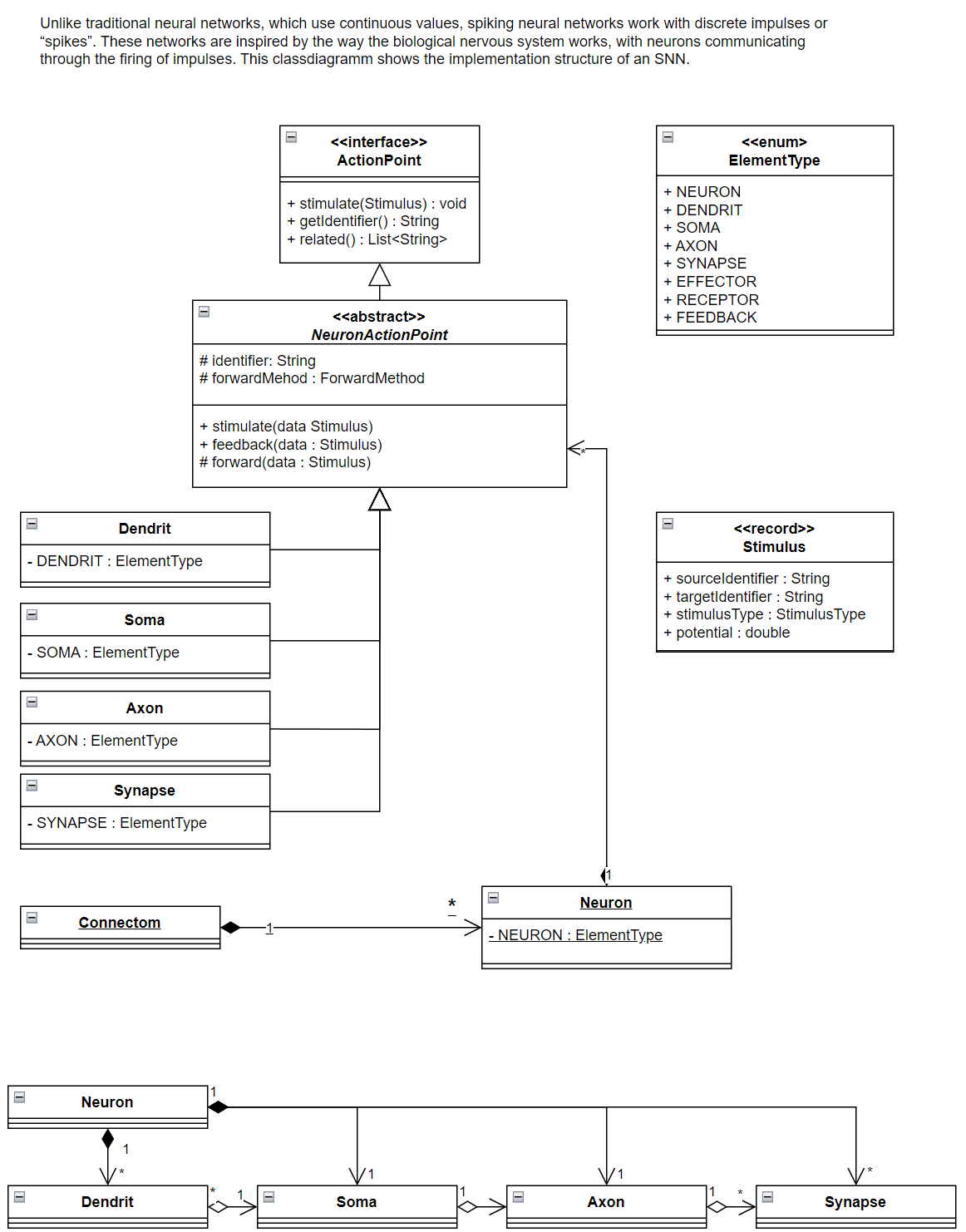Neuron Structure
The neuron itself consists of many dendrites, a soma, an axon, and numerous synapses. In this SNN app, the dendrites carry weights that are optimized during learning. Each dendrite is linked to its own soma; the soma is connected to the axon, and the axon maintains a list of synapses. This arrangement already forms a graph. The synapses then connect to arbitrary other neurons. The synaptic connections are predefined by the specification of neuron fields. Each synapse can form a connection with a dendrite, a soma, an axon, or another synapse. These synaptic connections can be inhibitory or excitatory, and recurrent connections are also possible.

Neuron Field Structure
The structure of the network is divided into neuron fields that can be configured individually.
For example:
- Effector groups, e.g., a neuron that activates a muscle.
- Brain regions such as the visual cortex or the speech center
- Sensors such as “retinal receptors,” “auditory cortex,” or “somatosensory area”
- Speech areas such as “speech center,” “Broca's area,” “Wernicke's area”
- Others: prefrontal cortex, executive control, working memory
- Emotions: e.g., amygdala, limbic system, reward circuit, striatum
- Integration areas such as thalamus, basal ganglia, cerebellum
For example:
- C0: Cortex (
C0,'', ...) - C1: Visual Cortex (
C1,C0, ...) - F1: Feedback (
F1,C1, ...) - R1: Receptor (
R1,C1, ...) - E1: Effector (
E1,C0, ...) - F2: Feedback (
F2,E1, ...) - Hidden 1: (
H1,C0, ...) - Hidden 2: (
H2,H1, ...) - F3 Feedback: (
F3,C0, ...)
The structure is always built as a tree. The neurons in these fields can be parameterized and equipped with various connections to different neuron fields. When constructing the connectome, the distribution of connection possibilities can be specified.
For example:
ConnectomeBuilder withConnectivity(double fieldPct, double backwardPct, double forwardPct, double siblingPct);